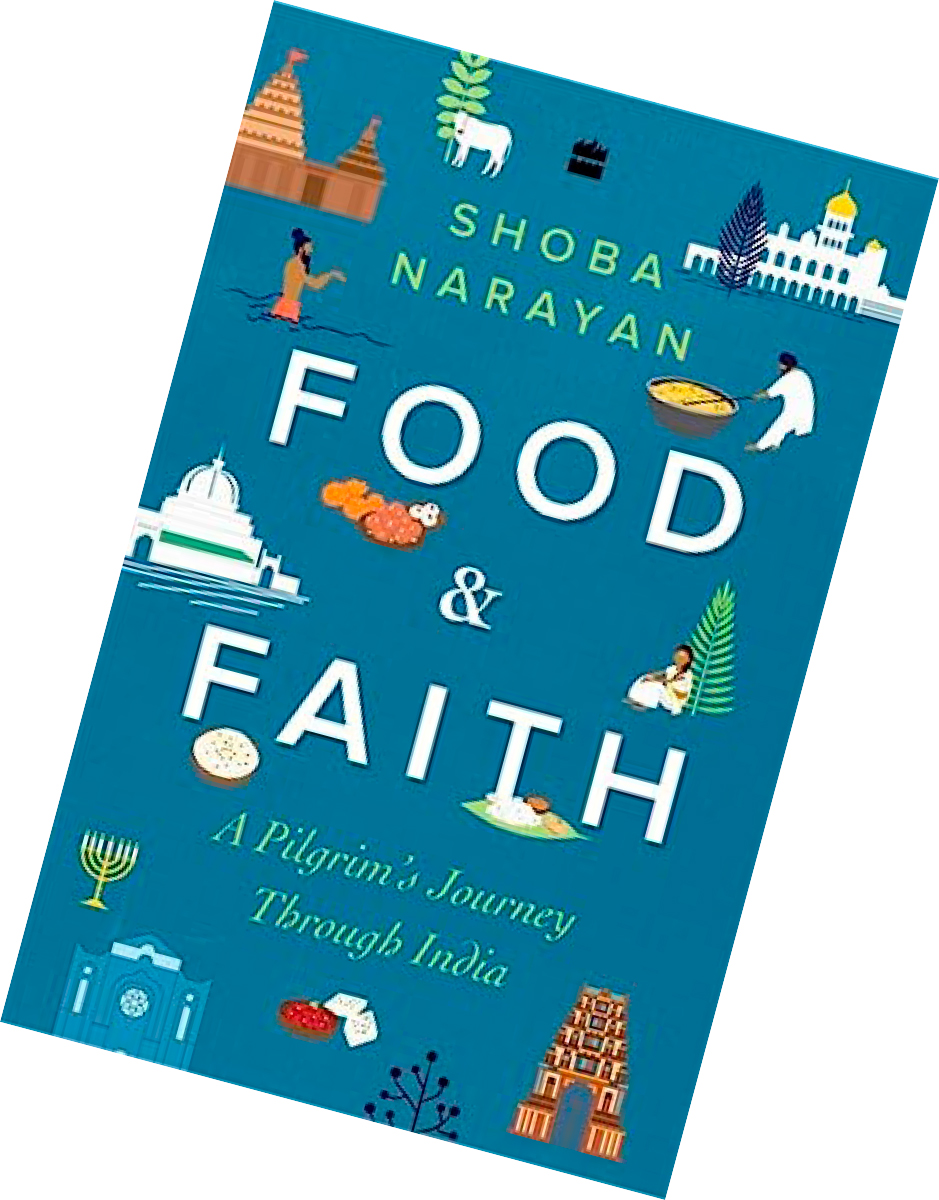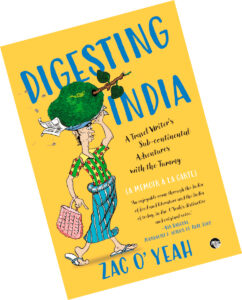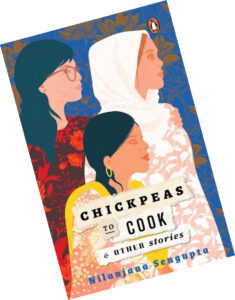

It’s the journey that matters, not the destination, and reading books is a constant reminder of this, especially if you are enjoying the read and are eager to figure out how it all ends. But you stop your impatience and savour every word, sentence, idea… For many, the lockdown following the spread of the Covid-19 virus was a time to revisit and re-hone their culinary skills. To savour the time alone and, for some, it was a time to start looking inward. It’s possible all of this was in the subconscious when I saw Food & Faith: A Pilgrim’s Journey Through India by Shoba Narayan at the bookstore; it was impossible not to flip through the pages which then revealed clear thoughts, clean writing, even reflecting something of myself. But I started reading it only after stumbling upon Digesting India: A Travel Writer’s Sub-continental Adventures with the Tummy by Zac O’ Yeah. Oh, I thought, Zac! I know him! And who doesn’t love travel and food!
Bengaluru-based Shoba Narayan is an internationally published columnist and author who writes about art, culture, food, travel and fashion. Incidentally, she obligingly signed copies of her book at my request. Zac O’Yeah is Swedish; I had met him several years ago. He has written in English and Swedish and is the author of the Majestic trilogy of detective novels set in Bengaluru, where he now lives.
Digesting India tickles the palate and produces giggles, and occasionally causes the reader to gag as O’Yeah recounts his ‘memoirs a la carte’ of dining here, there, and everywhere. As he says, ‘I’ve had thousands of astonishing meals ranging from fried silkworms in Shanghai to the national dish of boiled super-hot chillies in Bhutan, from the weird rotten shark delicacy so treasured on Iceland to curried goat intestines in Zimbabwe, from the primeval pizzas of Naples to the raw meat sandwiches of Denmark…’ He follows this up with ‘…since 50 per cent of my writings are about local delicacies, I’ve naturally suffered as many forms of tourist diarrhoea as there are dishes in the average cookbook…’ Imagine the rest. Better still, read the book.
However, here’s one to pique your imagination: O’Yeah visits the location site in Agumbe of the wonderful television series ‘Malgudi Days’ made by Shankar Nag, based on R K Narayan’s age-defying novel Swami and Friends. The key location used in the serial, he discovers, is a house called Doddamane (literally, big house), erected in 1900. An elderly, graceful woman called Kasturiakka now heads the family there. She sits, alongside two other elderly women, when O’Yeah visits: ‘Before I quite know how it happened, I have a steaming tumbler of kashayam in my hand: A milky, lightly spiced (with basil leaves, I think, and something else I can’t quite put my finger on) health beverage trusted in these hills. Kasturiakka’s hospitality is the stuff of legend. Visitors to the village can stay in an upstairs room and pay as they like, but she doesn’t allow filmy folks anymore.’ Goa, Bombay, Ujjain, Kolkata, Delhi… you can travel these and more places following the food that ZO’Y ate, and chuckle as you turn the pages.
Food & Faith is a different kind of journey. What started out as literally following the prasad/prasadam in various places of worship — think panchamritham, laddoo, dosai, peda, boondi — turns into a discovery of history, geography, culture, mythology, and introspection into one’s own understanding of belief systems, spirituality and faith; there’s also the business of eating seasonal fruits and vegetables.

The author takes you to many temples in the course of her quest, to places such as Udupi, Kashi, Palani, Madurai, Jaipur, Thiruvananthapuram, Amritsar, Puri, Mathura. You visit Ajmer Sharif, churches in Goa, and celebrate Rosh Hashanah with a Jewish family in Mumbai. As you journey on, you see how the author slowly grows further in her understanding of herself as she recounts and recalls the syncretic nature of India’s multicultural, multireligious and inclusive landscape.
Goans, she points out, have always embodied the good life. ‘Combined with this love of the good life,’ she writes, ‘is a commitment to the past. Many aristocratic Goan families including the late great cartoonist Mario Miranda honour their Hindu roots. When I interviewed him before his death, Miranda told me that his ancestors promised to deliver a sack of rice and a hundred coconuts to the local Durga temple at the start of each harvest. He kept this promise till his death, even though all the family lands had been disposed of, and Portuguese was his mother tongue.’
Many of us worship at the Ajmer Sharif. As a devotee puts it: ‘It is a Ganga Jamuna sanskriti here.’ Faith, in whomever, whatever, gives succour. This is best described by the author’s friend whose parents were devout Sikhs. ‘They lost their only son to a road accident when the boy was but twenty years old,’ she writes, and quotes her friend as saying “Instead of questioning their religion or feeling betrayed by the God that they had worshipped for so long, my parents gained all their strength from Sikhism. … “It was their life raft during the time of extraordinary hardship…It kept them sane. It allowed them to survive, to live.”
Faith is all about how to live, then. In which case, food adds spice. Like, for instance, the paal payasam or kheer which is the prasadam at the Krishna temple in Ambalapuzha, Kerala, according to Shoba, the best-ever. ‘It is not thick but has girth, if that makes sense,’ she writes. ‘It is rich but not gooey. It is condensed milk, but made the old-fashioned way, not by adding a tin of condensed milk, which is my shortcut for rich payasam. This milk is condensed through fire and evaporation. The proportion of rice to milk is perfect. There is enough rice for body, but it doesn’t overpower the milk. And it has that implacable aura — difficult to articulate — that makes a dish sing.’

Nilanjana Sengupta’s Chickpeas to Cook & other Stories sings in a different way, in different tunes and tones, about the melding of myriad women’s voices into the small but delicious salad bowl called Singapore. This book by the critically acclaimed writer, based in Singapore, defies categorisation: it is nonfiction, yet not entirely that; it is information, yet not only that; it is about people’s lives yet it is more than that. The author herself explains that she’s looking at ‘the multireligious, multicultural patina of Singapore, intentionally choosing the smallest of communities.… It is a look at the collective subtext of the grand, graceful, wise tide of timeless religious humanism that flows at the heart of a city, hidden away by its cosmopolitan urbanism and a people known to possess a pragmatic, if politically accommodating nature…’
She does this by exploring the world of Dawoodi Bohras, Jews, Nattukottai Chettiars, Eurasians, Sikhs, Theravada Buddhist-Burmese, Chinese-Taoists and Parsis through the real stories of women retold against a backdrop of the wider socio-religious context of Singapore and her personal connections through interviews. Confused? Don’t be. As you read, you will slowly be caught up in the little sparks that come together to light up the Singaporean way of life. Indeed, each of these books offers us ways of securing our place under the sun while recognising the right of every living thing to their own space. Truly, food for thought.
The columnist is a children’s writer and senior journalist






